In the coming age of distributed energy resources, domestic power generation, electric vehicles, smart appliances and home automation, the energy industry faces enormous change. Consumers want new and reliable sources of energy solutions, which are easily accessible and sustainable. Utilities will face a reduction in revenues from metered energy, and new sources of income need to be developed. At the same time, unprecedented technology developments bring significant challenges and present tremendous opportunities. Looking towards the future, the energy industry must somehow reinvent itself to adapt to a rapidly shifting market.
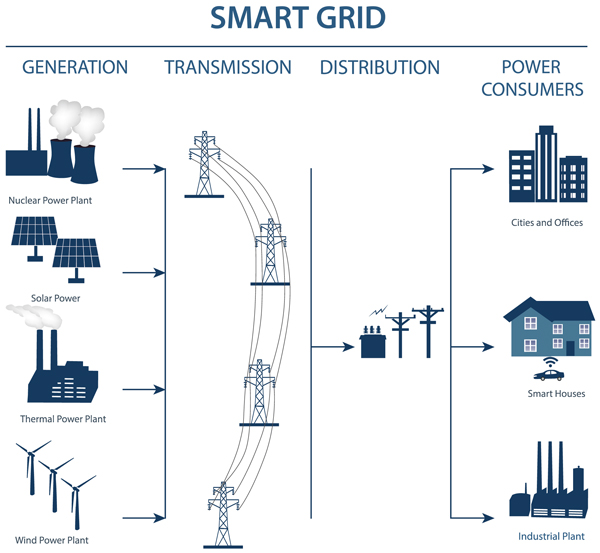
Figure 1: Traditional Power System Architecture
During the last century, electrical power and energy took on a larger role in our everyday lives, and our dependency towards electricity has increased steadily. It is the keystone of the digital age. Population growth and economic development have required electricity generation, transmission and distribution systems to adapt to the ever-increasing usages of electricity. As seen in Figure 1, the power system was hierarchical, with big generation centers producing the energy transmitted to the customer through transmission and distribution lines.
Figure 2 shows that this system is evolving to a more weblike system with a massive implementation of DER (Distributed Energy Resources) and home generation. The power flow is no longer unidirectional but can flow in any direction from the distribution system. This new topology opens the door to new capabilities such as power exchange between customers, forcing utilities to find new revenue sources. This will largely impact the existing business model of the energy industry.
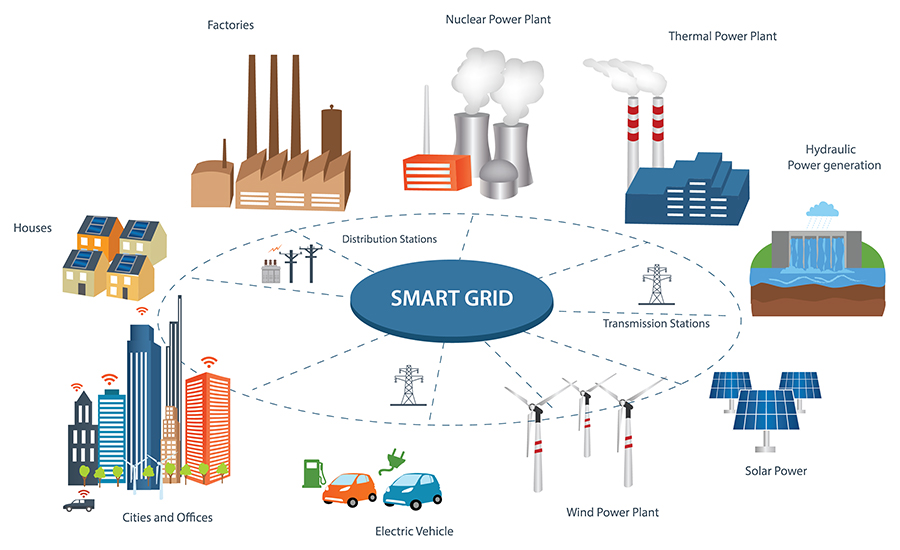
Figure 2: New Power System Architecture
(click to enlarge)
During the coming years, the nature of business will change dramatically for the energy sector. It will be affected by different challenges such as disruptive technologies, aging infrastructure, aging workforce and a new generation of customers. Digitization, distributed generation, renewable integration and domestic generation will all affect different aspects of this business model.
Luckily, the new technologies present tremendous opportunities for the industry to redefine a new business model. In this article, we will explore the challenges with new technology and how the business model can be redefined.
The Threats
The electric industry will be challenged as never before in many facets of its business. Technical, societal and human changes all affect the industry. These factors cannot be considered independently since they also impact each other.
Impact on Revenues
On the business side, it will be difficult to continue to have revenues based on once-a-month meter reading. Home generation, transactive energy, battery storage, and new types of load, such as electric vehicles, will change the nature of how the customer consumes energy. The EPRI net-zero homes program has proven it is possible to build houses that are energy self-sufficient. Moreover, they are able to sell excess energy back to the provider. The industry should develop new sources of revenue to support and maintain their assets.
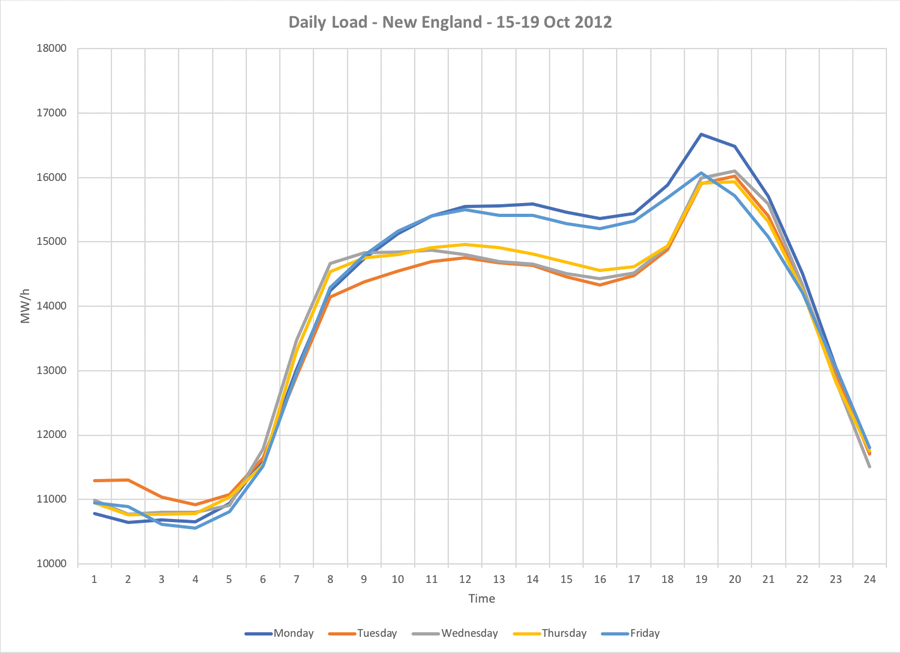
Figure 3: New England Daily Load (Data from NE ISO)
(click to enlarge)
Operating and Controlling the Network
Massive implementation of DER and home generation will impact the behavior of the load, making not only the load hard to predict but also making real-time demand-response hard to maintain or adjust, due to the dynamic behavior of the load. This will also impact operator software tools such as state estimator and load flow.
We can see in Figure 3, a typical load pattern of a power system that shows a small peak demand in the morning and a higher one at the end of the day. One curve for each day is shown in the figure, and we can see that from day-to-day, the load pattern is quite the same. Using mathematical tools, it is easy to forecast the future load, knowing the load of previous days and the future weather forecast. The utility can then dispatch the generating units to connect to the system to meet the demand.
Figure 4 shows the load pattern for California. The green curve shows the total load, and we can see it looks like the one in Figure 3. Due to the solar generation, the situation is more complex. The blue curve shows the solar generation the generation that the utility must supply. The increase in energy demand from the utility is very high at sunset, and this situation is hard to manage since many generating units must be connected to the power system in a short period of time. In addition, the solar generation may vary a lot during the day, due to cloudy conditions and power system operators must react in real-time to these changes.
In the future, it will be more difficult to operate the power system with the venue of domestic battery storage, that will change the load pattern drastically. Moreover, to keep the power system balance reliable, the operators will need to control the generation and the load.
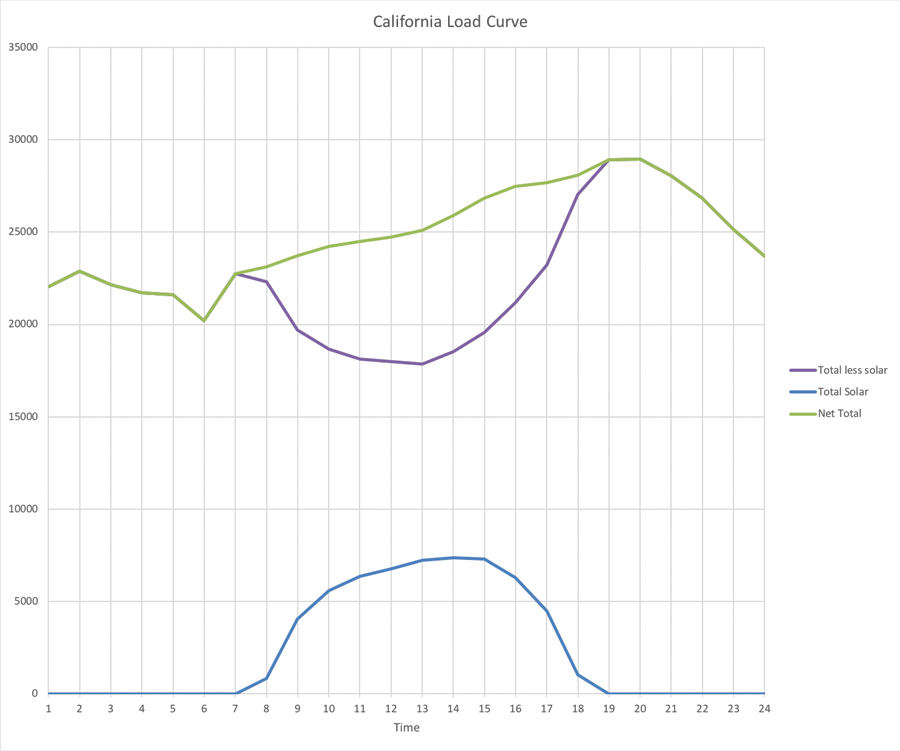
Figure 4: California Daily Load
(click to enlarge)
Asset Management
Asset management will also be a huge challenge. Due to the nature of the business, utilities have invested a lot of money in their infrastructure to ensure stable and reliable energy to their customer. Most of the critical infrastructure is doubled in a redundant scheme to avoid any loss of service, due to the failure of one piece of equipment. This secure system configuration has required a lot of capital investment. Now, in North America, a large part of this infrastructure has reached the end of its life expectancy. Utilities are facing the question of investing to replace these assets or to extend the lifetime.
Climate Change
Climate change is another important issue that impacts the utilities. The increased frequency and severity of weather events cause extensive damages to utilities since their transmission and distribution lines cross large territories and are more exposed. As a result, their customers are experiencing longer power outages. Climate change will also modify consumers’ habits, due to higher/lower temperature that can last many days.
Societal Change
Society is also changing, with more people working from their homes and needing reliable energy supplies. This is challenging for the utilities because now they have to improve the reliability of their system in peri-urban and rural zones.
The younger generation also poses a challenge to the industry, since they are more likely to interact with their environment and would like to do the same with their energy supply. More and more intelligent devices and IoTs are installed in the home, and the smart home is now a reality. The household consumption of energy-hungry appliances can be coordinated to minimize the power demand.
Social acceptance of new major power system infrastructure and construction of new lines also challenges the industry. It is complicated to add new equipment to meet the load demand.
Human Factor
The industry is also facing many aspects of human factor challenges. Internally, it faces an aging workforce, and many workers will retire during the coming years. Loss of expertise is expected in the industry, and programs are in place to preserve this information electronically. Younger workers have new interests and, contrary to their older colleagues, they master the new technologies quickly. Communicating through social media is their way of life.
Cybersecurity Risks
Cybersecurity is a major concern in our technological society. We have seen, over the last few years, major attacks in Ukraine, causing a six-hour loss of power for 100K people. The power system is increasingly exposed, due to its multiple connections with distributed devices. Cyber techniques exist to improve reliability and privacy in communication and databases, but still, risks due to social engineering, such as phishing, are hard to prevent.
Moreover, connecting home devices to the utility communication system can augment the threat risk because many homeowners don’t have the skills for configuring their IoTs for security. Remote control of smart homes by malicious actors can cause instability of the power system and, ultimately, cause a blackout.
Emerging Technologies
Emerging technologies will help the industry to develop a new business model. The keystone of emerging technologies is digitization, which is the process of transforming information into a digital format that can be handled by computers. Many industries have been transformed by the digitization of their products, such as the music and photography industries, with good results, more or less. The energy industry is now experiencing the same phenomena with the installation of smart meters that can send energy consumption information in digital form. Moreover, all the connected devices in the home can publish or subscribe digitalized information that can be of interest to the industry.
Real-time Analytics (Big Data)
Big data processing will be important in the future to process the information from millions of devices. Big data, in the power system context, can provide valuable information to system operators, such as accurate load forecasting. This new analytic approach can process different types of information from various sources. Big data analysis can also give customer behavior information and help elaborate marketing strategies.
Transactive Energy
Transactive energy covers both aspects of control and economics of energy exchange between distributed devices. These devices connected to a network can communicate with each other to provide or get energy from other devices. The transactions can be done behind the meter or with surrounding neighbors. Two-way meters are required to monitor and record the power flow, and the transactions can be logged using novel approaches such as blockchain.
Blockchain
Blockchain is a secure technique to record transactions, agreed between two parties, in distributed ledgers. It was first used to record financial transactions, and blocks of energy can be processed in the same way. For each transaction, a record called a “block” is created and added to a list of blocks. All the blocks are linked, and cryptographic techniques are used to protect the whole list of blocks and once recorded, a transaction cannot be modified.
IoT Devices
It is expected that more than 50 billion IoT devices will be in operation by 2020. IoTs are characterized by their capability to communicate with each other and the physical world by means of sensors and actuators. In the intelligent houses, these devices will perform operations/ functions in multiple application domains such as home security, health, entertainment and energy management.
These IoTs have heterogeneous environments, different communication and processing capabilities. For the homeowner, he/she can have advanced control of the different devices for a global energy management. The utility can also take advantage of the communication capabilities of these devices in order to remotely control the load in collaboration with the homeowner. However, interoperability and cybersecurity issues need to be addressed.
Domestic Generation
The price of domestic generation has decreased a lot since a few years ago, and now generation from solar panels costs $0.48 per watt. It is more affordable for domestic generation, and in combination with more affordable battery storage devices, consumers now have the choice to consume their energy in real-time or later, as desired.
Battery Storage
Battery storage is used to store extra energy produced by domestic generation. On a sunny day, the energy produced by the solar panels may exceed the energy consumed in the house and can be sold to the energy provider or the neighbors, or stored for future use. Information systems can inform the customer with the most economical approach in their decision to sell or store.
Electric Vehicles
During the last decades, interest in electric vehicles has risen, due to climate change and pressure to reduce fossil fuel use. For most people, the electric vehicle will be charged during the night. This type of load presents a lot of interest because its charging can be modulated in time. The energy provider can use this feature for demand-response programs. It is possible to fast charge the vehicle up to a certain level, in order to have the vehicle available for emergency use, and then continue with slow charging.
Reinventing the Industry
Despite the fact of all the challenges faced by the energy companies, it is the perfect time to review their business plans. Other industries have faced the digitization challenge in the past, some with success (banks and telecoms), and some with difficulty (music and photographic film industries). The new technologies can present threats to the utility, but they can also present opportunities. The utilities should design their new business model to include these technologies, in order to build a customer-centric business. The four pillars of this new business are connected customers, loyalty programs, real-time analytics and cybersecurity.
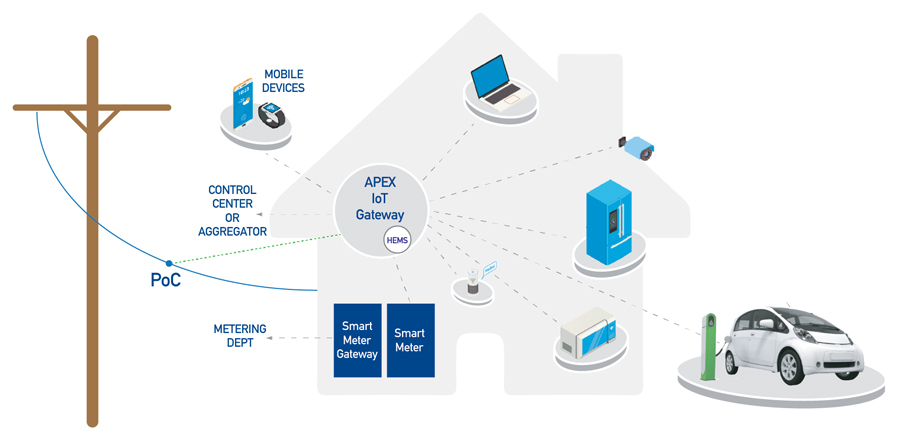
Figure 5: Connected Home
(click to enlarge)
The utilities shall connect to their customer and get real-time data from them. The customers must also be able to interact with the utilities. One way to connect with the customer is with connected-home programs. The utilities can provide value-added services to their customer, such as a strategy to connect their electric vehicle or how to choose appliances. The utilities should offer home gateways that connect the IoTs inside the house to the utility. As shown in Figure 5, the IoT gateway connects to the IoTs, supporting various communication protocols. It communicates with the utility sending the IoTs’ data or processing received control or setpoint.
Both the consumer and the utility can use this gateway to manage the energy use inside the house. The home gateway includes a Home Energy Management System (HEMS), which orchestrates and dispatches the operation of the appliance in order to limit the power demand or to smooth out the energy load profile. The HEMS includes analytic functions for precise forecasting of energy use and cost. The consumer will benefit from reduced energy bills and increased home comfort. The utility will have the possibility of controlling home energy consumption, in order to implement a demand-response program. The gateway can also ensure the cybersecurity by filtering and blocking messages to or from the house.
The loyalty program is another key element for building customer engagement. The utility can interact in real time with customers to propose reward schemes in exchange for reducing their energy consumption, for example. This marketing tool can be used to help operate the power system and to balance generation and load. Moreover, with real-time analytic tools, it enables the utilities to analyze customer behavior, find patterns in data with powerful data visualization and react faster to new opportunities.
Real-time analytics, based on big data analysis, bring together disparate data for a clearer view of the customer experience. This information comes from the customer, their habits, from the IoTs inside the house or from external databases such as Google traffic or weather forecasts. In creating a baseline of customer behavior, utilities can forecast precisely the load for the coming hours and can also predict what customers are going to do.
The success of this new business model must be secured by a good cybersecurity program. The power system is more and more exposed to threat, due to its multiple connections with distributed devices. Cybersecurity must be addressed at the IoT, gateway and enterprise levels with security objectives for each level. The IoT must contain a software agent to manage the connectivity with the network, validate the integrity of its data and manage security keys and certificates. The gateway should ensure that no untrusted devices could connect to the network, detect abnormal conditions and maintain a list of active and revoked keys. At the enterprise level, a system must be responsible for managing certificates, monitor the IoTs behavior (firmware version, hardware version) and assess the whole system reliability compiling statistics and detect malicious actor’s activities.
Finally, the industry can review the way risk analysis is performed. This analysis should include the customer and their ability to face power failures. Taking into account the resilience of their customers to power failures, the industry can thus avoid installing costly primary equipment in reducing their redundancy requirements.
Conclusion
Utilities need to develop a new business model to maintain their business in today’s tough global market. This new model must be customer-centric and include interactions with them to increase customer loyalty. Continuing efforts should be made to improve the customer experience, offering personalized services and connected-home programs. Data analytics will help increase the customer experience and will also help the system operation with better load forecast. Cybersecurity programs should be developed to ensure security inside and at the edge of the system. The industry should extend their risk analysis studies to include costumer resilience in order to reduce major investments in equipment replacement. Finally, the digitization process will build an attractive industry for talented people and a better ecosystem for the skilled younger workers.
 Marc Lacroix Is responsible for the energy sector development at eMcREY. He worked at Hydro-Québec from 1980 to 2013. Lacroix has developed a unique expertise related to transmission, generation and smartgrid automation and operation. From this expertise and his participation in setting international standards, he has developed a visionary viewpoint of the future of power systems. Lacroix received a master’s degree in electrical engineering (1995) from École Polytechnique de Montréal. He is an IEEE senior member and is active in IEC Smart Grid SyC and TC58 working groups 10, 15 and 17.
Marc Lacroix Is responsible for the energy sector development at eMcREY. He worked at Hydro-Québec from 1980 to 2013. Lacroix has developed a unique expertise related to transmission, generation and smartgrid automation and operation. From this expertise and his participation in setting international standards, he has developed a visionary viewpoint of the future of power systems. Lacroix received a master’s degree in electrical engineering (1995) from École Polytechnique de Montréal. He is an IEEE senior member and is active in IEC Smart Grid SyC and TC58 working groups 10, 15 and 17.







